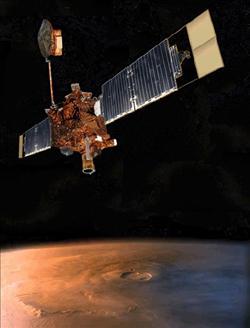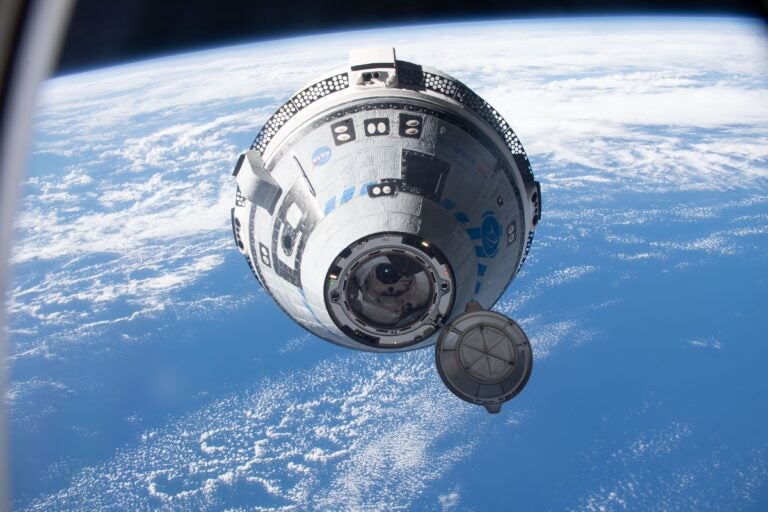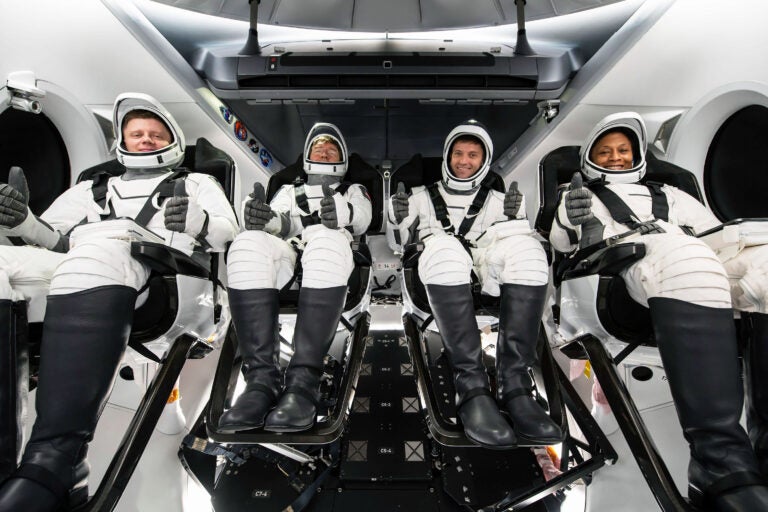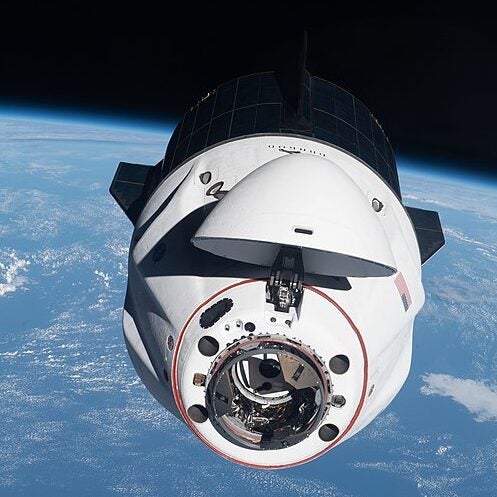NASA’s Mars Global Surveyor (MGS) orbiter, the oldest martian spacecraft in operation, has studied the Red Planet for 9 years. The normally reliable probe has not called home since earlier this month.
On November 2 following a routine maneuver, the orbiter sent word concerning difficulty moving its solar panels. The probe, responding correctly to the issue, switched to backup controllers. This resulted in 2 days of silence from MGS. On November 5, at four different orbital points, the probe sent signals without data. This indicated it went into a pre-programmed safe mode to await instructions from the ground crew at the Jet Propulsion Laboratory (JPL) in Pasadena, California. The spacecraft should have contacted JPL after 7 days without receiving commands, but MGS has been completely quiet.
“The spacecraft has many redundant systems that should help us get it back into a stable operation, but first we need to re-establish communications,” explains Tom Thorpe, MGS project manager.
NASA enlisted its Mars Reconnaissance Orbiter (MRO) in the search for the silent probe. Late Wednesday, MRO attempted to capture a low-resolution image of MGS to help determine its position. Tomorrow MRO will attempt this maneuver again, this time using its high-resolution camera.
MGS, like the twin rovers on the Red Planet’s surface, has surpassed original expectations. NASA originally scheduled the mission for about 2 Earth years. After that period passed with significant discoveries, the space agency continually renewed the MGS mission, most recently on October 1, 2006.
Among the orbiter’s successes, MGS has discovered numerous young gullies shaped long ago by flowing water, helped determine NASA’s Opportunity rover’s landing site by identifying water-related mineral deposits, and mapped the Red Planet’s topography.










